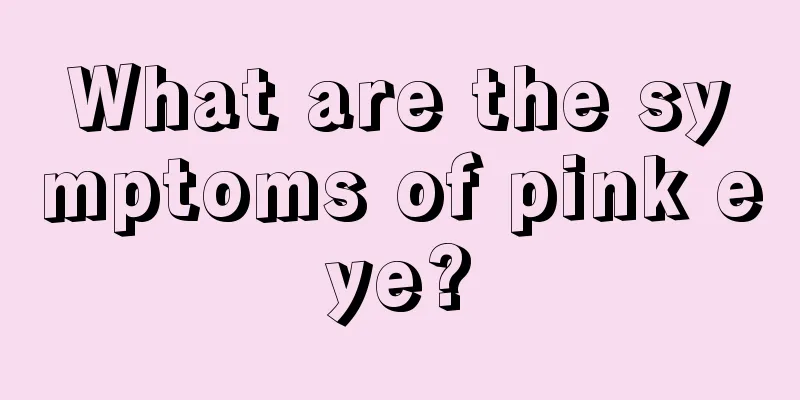What are the symptoms of pink eye?

|
Conjunctivitis is a common acute infectious eye disease. In the early stages, patients will experience hot eyes, photophobia or a burning sensation, and some will also have blood spots, as well as adverse symptoms such as headaches, fatigue or fever. 1. Pink eye is infectious conjunctivitis, also known as conjunctivitis fulminans, an acute infectious eye disease. Depending on the different causes of the disease, it can be divided into bacterial conjunctivitis and viral conjunctivitis. The clinical symptoms are similar, but viral conjunctivitis is more prevalent and harmful. This disease can occur throughout the year, but is more common in spring and summer. Pink eye is an eye disease transmitted through contact, such as contact with towels, face washers, faucets, door handles, swimming pool water, public toys, etc. used by patients. Therefore, the disease often spreads widely in collective units such as kindergartens, schools, hospitals, and factories, causing epidemic outbreaks. 2. Conjunctivitis usually affects both eyes first. In the early stages of the disease, patients feel hot, burning, photophobia, and redness in their eyes. They feel a sharp pain in their eyes, as if sand is entering their eyes. Then the eyelids become red and swollen, with a lot of mucus, photophobia, and tears. When getting up in the morning, the eyelids are often stuck with secretions and are difficult to open. Some patients have small bleeding spots or hemorrhagic spots on the conjunctiva, the secretions are mucopurulent, and sometimes a grayish white pseudomembrane forms on the surface of the conjunctiva. There may be grayish white infiltration spots on the edge of the cornea. Severe cases may be accompanied by systemic symptoms such as headache, fever, fatigue, and preauricular lymph node enlargement. 3. Conjunctivitis generally does not affect vision. If a large amount of mucopurulent secretions adhere to the surface of the cornea, there may be temporary blurred vision or iridescence (rainbow-like aperture in front of the eyes). Once the secretions are wiped off, vision will become clear again. If bacterial or viral infection affects the cornea, photophobia, tearing, and pain will worsen, and vision will also decrease to a certain extent. Conjunctivitis develops rapidly, usually within 1 to 2 days of bacterial infection, and most cases affect both eyes. The disease is highly contagious. Since the immunity is low after recovery, repeated infection is possible (if contact with the patient again, the disease can be contracted). Anyone from infants a few months old to people in their 80s and 90s may become ill. The disease spreads quickly. After contracting conjunctivitis, it often only occurs in one person, and within 1 to 2 weeks it spreads widely to the whole family, kindergartens, schools, factories, etc., infecting a large number of patients regardless of gender, age or status. |
<<: How to treat allergic conjunctivitis effectively
>>: What should I do if my baby's head is tilted when sleeping?
Recommend
Treatment for newborn babies who cry when not held
The phenomenon of newborns crying if they are not...
Treatment for separation anxiety in young children
When children reach the age to go to kindergarten...
What is the closing time of the baby's fontanelle and the harm of delayed closure
Generally, after a period of time after a baby is...
Can cerebral palsy in premature babies be cured?
Considering the current living standards, the phe...
How to correct hunchback in children?
Hunchback has become a common disease in life. Ch...
What to do if your one year and three month old baby doesn't like to eat
The child is one year and three months old and do...
Why does a child’s penis itch?
The development of children's genitals is a v...
Effects of breath-holding spells on the brain
Everyone knows that children like to cry a lot. T...
How to treat crossed legs syndrome
Crossed legs syndrome is a common phenomenon in y...
Neonatal ear fistula
If there is something like a small hole on the ea...
Causes of nosebleeds in children
For parents, no matter what symptoms their childr...
Can a one year old eat peaches?
A one-year-old baby should have been weaned, and ...
Which material is better for baby bottles?
A milk bottle is something that every baby must u...
What to eat in children's diet to protect their eyes
Eyes are the windows to the soul. Both children a...
What to do if your baby has tonsillitis and fever
Tonsillitis and fever in babies have a great nega...









